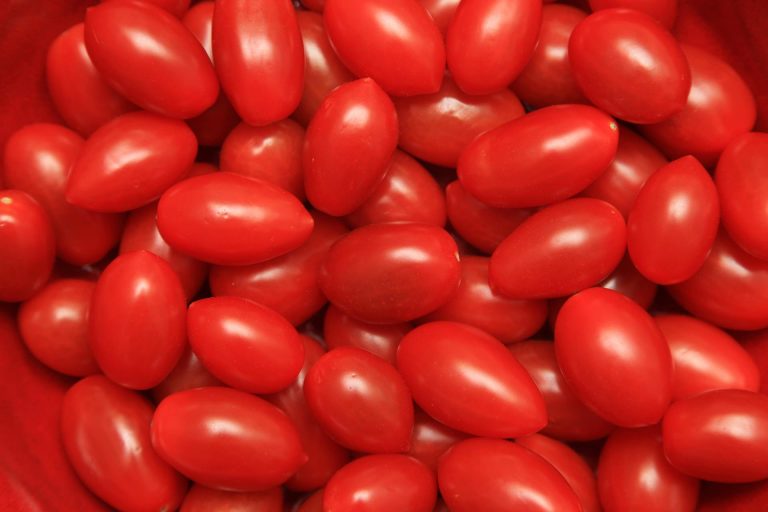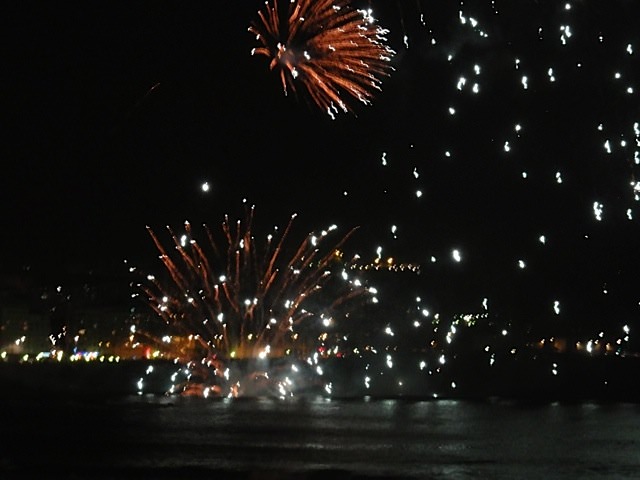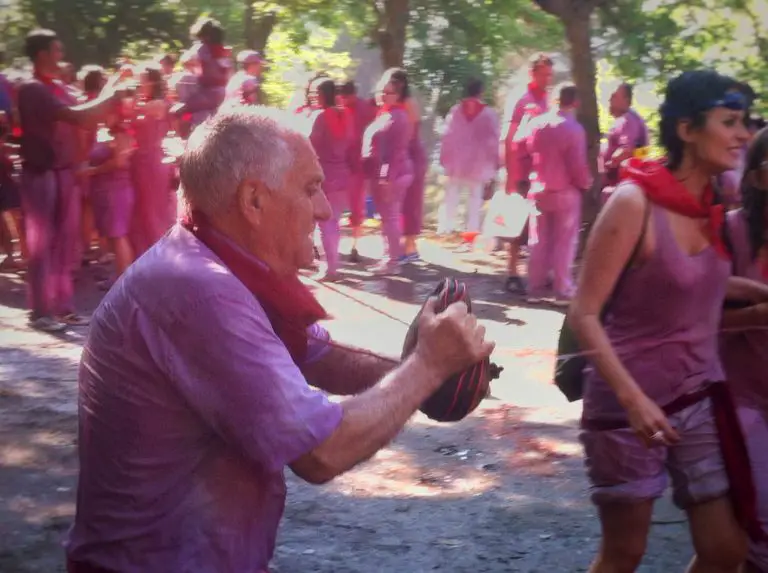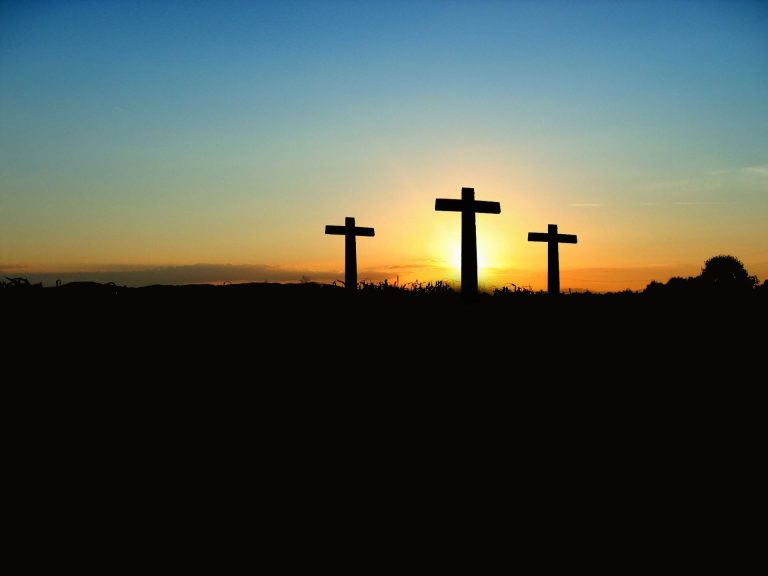Durga Puja: A Bengali Tradition
Edge your way to the front of the energetic crowd, camera in hand. You won’t want to miss what’s coming. Suddenly a larger than life-sized ten armed statue is hoisted over the heads of a group of men. They make their way to the ghat, goddess elevated for all to see, and spin her three times shouting Durga Ma Ki Joy! Durga Ma Ki Joy! (Durga is great!) before hurling her into the Ganges to send her home. The energy at the ghats on this final night of Durga Puja in Kolkata, India is contagious. Even Bengali women who are usually quite docile and reserved are shouting with the men, faces covered in crimson sindoor powder from the festivities that took place earlier in the day.
This is Durga Puja, the biggest festival in Bengal. Each year around the end of September to the middle of October Goddess Durga comes to life all across this northeast region of India. It is during this time that Bengalis witness six days of prayer and celebration in honor of the coming of Ma Durga who leaves her husband Shiva’s home to visit the earth for a few days.
According to ancient Hindu scripture, Ma Durga, a protective and motherly Goddess, was created by a collective effort of the Gods when Mohashashur, a man with super powers became a little power hungry and was on a path to destroy the earth and the heavens. She was sent to earth and Mohashashur fell in love with her. A battle was arranged between Durga and her admirer; if Mohashashur won, they would marry. Long story short, Durga defeated the evil Mohashashur and it is this victory over evil that Bengalis celebrate today during the Durga Puja festival.
In preparation for the Puja, communities invest thousands of dollars to create enormous pandals, ornate make-shift temples. Pandals often follow themes that change from year to year and each community competes to have the largest, most ornate and creative pandal of all. On the second day of the Puja, called Sasthi, the Durga statues are placed in the pandals across the city. On each day of the celebration Bengalis perform special Pujas or prayers. Bijoya Dasami, the final day of the festival, marks the victory of Durga over Mohashashur and of good over evil.
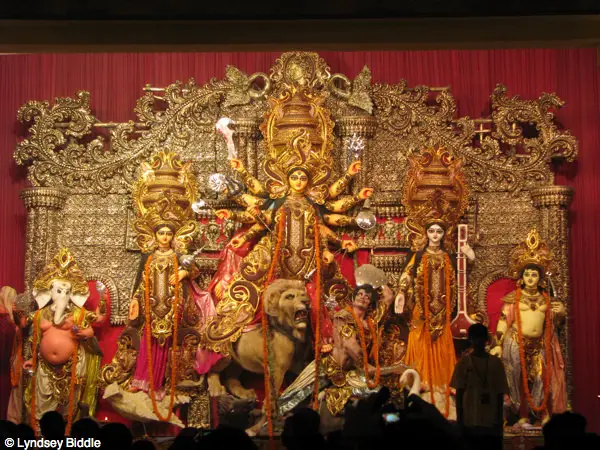
The image of Durga always has ten arms, each armed with a different weapon used to battle evil. In every pandal you will see that Durga is surrounded by her consort of Gods and Goddesses. The set-up in every pandal is the same: Ganesh the elephant God on the far left, then Laxmi the Goddess of wealth, in the center is always Ma Durga, then Saraswati the Goddess of learning and music, and finally Durga’s son Kartik.

Dasami, the final day of the Puja, is the most eventful. In the daytime married women gather in the pandals, present offerings to Durga and her consort, and play with sindoor, smearing it all over each others’ faces. In the evening is when Durga is taken from the pandal and paraded to the Ganges. Throwing the Goddess in the Ganges is symbolic of sending her home once again.
Durga Puja travel advice
Durga Puja offers a unique experience to any visitor. The sites, sounds, and colors are not to be found elsewhere. If you decide to head to Kolkata to witness this be sure to be respectful of Hindu customs: don’t wear shorts, skirts, or revealing clothes in the pandals. Also book a hostel or hotel room well in advance. This is a busy time in the city with many visitors from all over the country so finding a room upon arrival could be next to impossible. Most importantly, bring a good camera because the Puja is a photographer’s dreamland, countless unique images.

